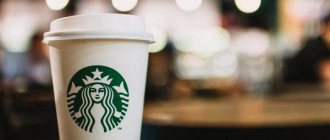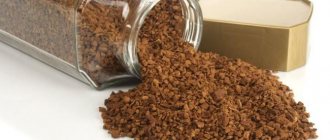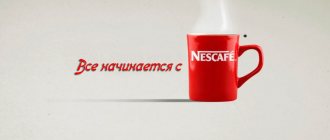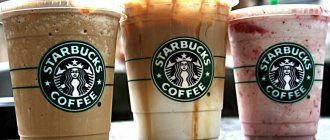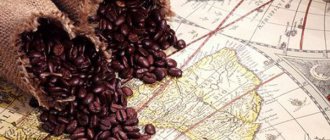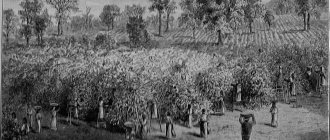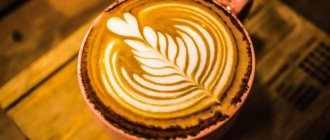Starbucks is one of the most famous chains of coffee shops and coffee outlets around the world. Today it is the largest coffee company in the world, with outlets in 66 countries around the globe. Starbucks is not inferior in its popularity to even the largest fast food restaurant chain McDonald's and is considered almost one of the symbols of America.
In this article, Elgreloo.com will tell you what is special about this company and why Starbucks coffee shops are so popular all over the world. You will also learn the history of the corporation and interesting facts about Starbucks.
Creation
Starbucks was founded in 1971 by three friends from Seattle:
- Jerry Baldwin, English teacher;
- Zev Seagle, history teacher;
- Gordon Bowker, writer.
They knew each other from their days at the University of San Francisco. The founders chipped in $1,350, borrowed another $5,000, and opened a store selling roasted coffee beans. For the first 9 months of operation, beans were purchased from Peet's Coffee, after which purchases began directly from farmers. The business was profitable, and soon Starbucks had its own roastery and a second outlet.
The enterprise turned into a chain of coffee shops with a different manager. By 1986, Starbucks had 6 of its own stores in Seattle, a small production facility, and an established mechanism for supplying coffee beans to bars, cafes, and restaurants. In 1987, former Starbucks marketing executive Howard Schultz bought the company from its founders and merged it with his own chain of coffee shops, Il Giornale. The combined enterprise began to develop under the name Starbucks. Already in 1992, the company had 165 retail outlets, at the same time it made an initial placement of its securities on the stock market.
By the end of 2016, the number of coffee shops around the world exceeded 24,000. A well-thought-out franchise scheme helped the company conquer the world.
“My friends, Gordon Bowker, Jerry Baldwin and I at that time often discussed and came up with interesting ideas for business, we all wanted to change our lives and do something big, meaningful and meaningful. We started meeting every few weeks to exchange ideas, and one day at lunch we ordered espresso, which turned out to be very bad,” Zev Siegl in an interview with The Guardian, 2016.
Jerry Baldwin, Gordon Bowker, Zev Seigl
Expansion of activities
After a while, it became clear to business owners that it was time to expand their activities and go beyond selling coffee in catering establishments. Then an agreement was concluded with United Airlines, the subject of which was the sale of Starbucks coffee on airplanes. Cooperation has begun with the luxury tea manufacturer Tazo Tea Company.
Starbucks also began to completely conquer the Internet, and the first step towards this was the online ordering service. In collaboration with Dreyer, the company began producing high-quality coffee ice cream, and ground coffee and coffee beans from Starbucks could now be purchased at Wall-Mart.
As you know, the most effective advertising is word of mouth. Starbucks owes its overwhelming success primarily to this advertising. In 2004, a record number of sales points were opened for the coffee business, namely 1344. Starbucks coffee shops appeared in Bulgaria, Chile, Hungary, Romania, Bahrain, and Canada. Now the number of coffee shops is about 17 thousand.
Starbucks logo
The coffee chain's name was borrowed from Herman Melville's novel Moby Dick. Captain Ahab's mate was named Starbuck. When creating the logo, a marine theme was also used. It depicts a siren - half-woman, half-fish, luring sailors with her beauty and mesmerizing singing.
The original image of a half-naked mermaid was taken from a 16th-century engraving. The designer did a little work on the character - they added a smile to him and removed his belly button. In 1987, green became the dominant color in the logo instead of brown. In 1992, the lower part of the siren's body was removed, and in 2011, nothing remained on the sign except a mythological creature in a green circle.
Meeting point
The popularity of Starbucks inspired not only consumers, but also competitors. Similar coffee shops began to open everywhere, but with lower prices. Even fast food restaurants and gas stations have started advertising "Espresso" to lure customers.
It was important for Starbucks to maintain its uniqueness. The company relied on positioning and announced its principles: romance, luxury for everyone, tranquility and an informal atmosphere.
Following its stated benefits, Starbucks is completely changing the format of coffee shops, turning them into the best place to socialize.
The area of the establishments has increased tenfold, and high bar stools at the counter have been replaced by cozy tables. With the ability to sit apart from other customers, Americans began making appointments at Starbucks.
Howard Schultz wanted his chain of coffee shops to not just sell coffee, but to have a special atmosphere, becoming a third place between work and home.
In America, Starbucks has become the embodiment of democratic coffee shops for a new generation of visitors - educated and with good taste.
Howard Schultz emphasized that his business is not to fill stomachs, but to fill souls. This is the secret to Starbucks' success.
Starbucks drinks
The first Starbucks coffee shops offered several varieties of lattes and espressos . Howard Schultz brought many of the recipes from a trip to Italy, where he really liked the culture of coffee drinking. Following the hot ones, the assortment also included cold coffee drinks, including several types of Frappuccino. The main menu also includes about 10 types of tea - black, green, herbal, with and without caffeine. Specific recipes are distributed in certain regions, so a regular Starbucks customer in another country can often try something new.
In addition to drinks, the company sells its own baked goods and snacks, and continues to maintain its long-standing coffee bean business.
Menu selection
In addition to the standard set of espresso-based coffee cocktails, you can order at Starbucks:
- Frappuccino – coffee with milk and ice;
- coffee with skim milk and sweetener (or honey) for those on a diet;
- salads and baked goods without syrup based on glucose and fructose;
- instant coffee VIA “Ready Brew”;
- beer and wine (in some US branches);
- Fizzio carbonated drinks;
- coffee with soy or coconut milk;
- coffee made from beans aged in whiskey barrels.
In addition, Starbucks produces its own coffee machines - Verismo, which provide the largest portion of coffee with a volume of 920 ml.
Starbucks corporate culture
Despite the fact that Howard Schultz was in charge of the overall management of the company, there were two other important people at its helm:
- Howard Behar, president of Starbucks International;
- Orin Smith, Chief Financial Officer.
The three heads worked so harmoniously that they were called H₂O by the first letters of their names - Howard, Howard and Orin.
Howard Behar wrote the book It's Not About the Coffee: The Corporate Culture of Starbucks, which is often listed on popular business literature lists. Its main idea is that a company needs to consider both employees and customers, first of all, as people. If this principle is followed, then everything else will come by itself.
"Name" glasses
The idea of writing on them the names of the people who ordered the drink and saying them loudly to the whole room turned out to be simple and ingenious. Such personalization and personal appeal to each of the visitors is very captivating and evokes special sympathy for the brand. This idea became the one that makes Starbucks stand out from all other coffee shops.
The barista must communicate openly and kindly with all customers. This is almost officially recorded as his main job responsibility. If a barista is a top performer but is naturally uncommunicative, he won't be hired at Starbucks.
When coffee shops purchased new bulky coffee machines in the 2000s, and they began to block the baristas from customers, the decision was immediately made to redesign the bar counter so that the employee and customers had open visual contact. Otherwise, such isolation contradicted the main idea of Starbucks - “communication and more communication!”
Starbucks franchise
The Starbucks empire is too big to be owned by one company. Today only 30% of establishments belong to the parent company, the rest operate as franchises. At the same time, management puts reputation first, which is why many applicants are rejected. Almost everything is controlled: the size of the room, its location and the location of the entrance doors, the interior, the menu and even the music playing in the hall.
Musical accompaniment
It is also carefully thought out. When you enter a coffee shop, you will hear pleasant, unobtrusive music. At that moment, the same song will be played in all the coffee shops of the chain. You can even buy a CD with the music playing at Starbucks and listen to it at home. This is a kind of music network that covers absolutely all Starbucks locations around the world. Visitors love it, and those who are not yet aware of this fact become even more fond of the brand.
For example, you are sitting in New York over a cup of coffee and listening to a song, and at the same time your friend from Seattle is also relaxing at a local Starbucks, and they are playing the same music as you - isn’t it touching?
Starbucks in Russia
Starbucks coffee shops came to our country quite late. The delay turned out to be due to a legal dispute - Starbucks LLC, which had nothing to do with the chain, appeared in the Russian Federation and registered the right to use this brand in Russia. As a result, the American corporation first had to fight for its own rights.
The first coffee shop in the Russian Federation was opened in September 2007 in the Mega-Khimki shopping center. Today there are about a hundred network points operating in the country, most of them are located in Moscow.
Promotion: social networks and the FOMO effect
“Much of the relationship with the company is between you and the barista behind the counter,” says Starbucks marketing executive Brad Stevens. “We couldn’t figure out a way to replicate that in TV advertising.”
Brand promotion channels are indeed limited, and the marketing budget is much smaller than other large companies. In 2022, Starbucks spent $245.7 million on advertising—about 1 percent of revenue.
Although the company sometimes resorts to television and digital advertising, social networks remain its main promotional tool. In 2018, Starbucks even won an IPA award for its social strategy, which generated almost £4 in additional profit for every pound invested. Here's how she succeeds:
- The FOMO effect (“fear of missing out” - “fear of missing out on something important”). This message becomes the focus of advertising campaigns associated with the release of limited-edition products for the holidays or other events: pumpkin lattes in the fall, red cups before Christmas or the Unicorn Frappuccino in the spring.
- Involvement. The company often organizes competitions and sweepstakes. For example, it offers fans from any city in the United States to receive a new product on the menu a week earlier than it appears in cafes across the country. To do this, you need to win the competition by answering questions, solving problems, or generating creativity.
- User Content. The brand often runs challenges to encourage content sharing. For example, the “Red Cup Design Challenge” invited users to color the cups themselves and publish the results on social networks. Cups with the best designs appeared in cafes in the pre-Christmas period.
Collaborations
Starbucks regularly teams up with different brands to release joint products. In recent years, the coffee chain has made releases with women's clothing manufacturer Private Sun, TV presenter Oprah Winfrey and the famous notebook brand Moleskine (promo code for a 10% discount is STONE).
